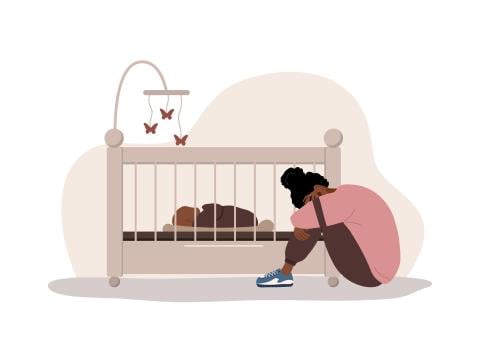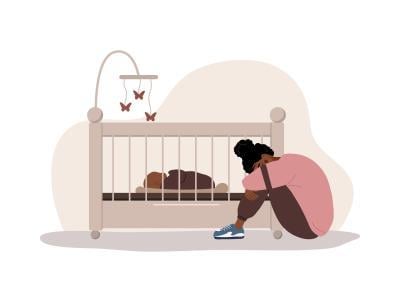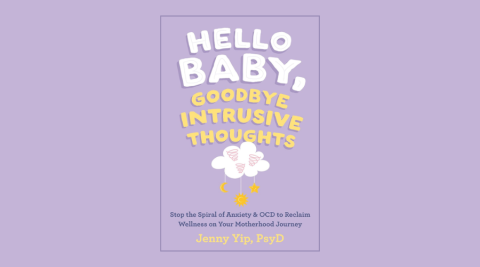Living With OCD: One Woman's Story
The anxiety and shame started when Diance was 25. She was sitting in a pew at her church, where she is active in the ministry. It seemed to come out of nowhere. She felt as if she were going to jump out of her skin.
Diance doesn’t know why she felt so anxious. But she knows what she saw when the feeling overwhelmed her: a nearby woman wearing a v-neck sweater.
For years after that episode, Diance, a health care professional from Maryland, was unable to look at people wearing v-neck sweaters or other potentially revealing clothes for fear she was sinning. When people sat down across from her and crossed their legs, she thought it was because she had been looking at their genitals.
“I was scared to look at people. I thought I was offending them by inappropriately glancing at them, and I constantly prayed for forgiveness,” said Diance, who stopped hugging family and friends and felt like a hypocrite in church.
Diance suffers from scrupulosity, a type of obsessive-compulsive disorder (OCD). People with scrupulosity suffer from persistent, irrational thoughts about not being devout or moral enough, and believing that these thoughts are sinful and disappoint God. And like the 2.2 million adults who have OCD, Diance’s obsessive, unwanted thoughts and rituals interfered with her life and relationships.
Shame and Avoidance
“Forget about dating,” she said. “I couldn’t touch anybody, I couldn’t hug. People would flock around me but I would only let them get so close.” Usually an extrovert, Diance remained friendly to people but stopped socializing with friends and family.
Diance’s sister, Penny, a registered nurse, can chart Diance’s disappearance from family functions by her absence in family photos.
“She started making excuses not to be there,” Penny said. “And if she was there she would go upstairs and sleep. Sometimes we would get upset. Everyone would get together and cook and wash the dishes, and we wondered why she never helped out, why she was always tired.”
Diance was too ashamed to tell most of her eight siblings about her anxiety and depression that, at age 35, she attempted suicide.
In Therapy
Diance was diagnosed with OCD at age 35 — 10 years after her first anxiety attack and five years after her first therapy session. She was not immediately diagnosed with OCD because symptoms of her depression overwhelmed symptoms of the anxiety disorder.
After her suicide attempt, Diance started seeing a psychiatrist who specializes in anxiety disorders and saw real progress. Diance shared what she learned during regular phone conversations with her sister, even recommending books so Penny could read about OCD. Her brother, Tyrone, a minister, even sat in on some therapy sessions so he, too, could understand OCD and show his support.
Through cognitive-behavioral therapy, Diance and her therapist, Julie Lewis, PhD, of the Ross Center for Anxiety and Related Disorders, identified Diance’s thought patterns and worked to change how she interpreted the actions of other people.
For example, Dr. Lewis had Diance observe other people to see that they naturally shift their legs or touch their shirts in conversation, which contrasted to Diance’s interpretation that she offended people, which caused them to shift in their seats. Diance became more willing to test new ideas like these, Dr. Lewis said, and she forced herself to talk to people, particularly people wearing low-cut shirts, and not use her safety behaviors, like holding up a cup of water to block her view of the person.
This kind of treatment breaks the reinforcement cycle of using compulsions to relieve obsessive thoughts and actions, said Michelle G. Craske, PhD, director of the Anxiety Disorders Behavioral Research Program at UCLA.
“Cognitive-behavioral therapy helps individuals to develop a new way of thinking about obsessions. Instead of thinking that the obsessions must mean something horrible about ‘me’ or what ‘I might do,’ individuals come to realize that the obsessions are just that — just obsessions.”
In Recovery
“Anxiety clouds your thinking,” agreed Diance, who started recording her thoughts as poetry and found a hidden passion for creative writing. “Now when I read my poetry I can see how irrational my thinking was.”
Now 47, Diance recently celebrated her last therapy session. While she calls her recovery from OCD an ongoing process, she happily reports that she now socializes with friends and family again and is even ready to start dating. “I’m not perfect. I’m imperfect,” she said. “But I don’t hate myself anymore.”
Diance would like to try to help those struggling with OCD or their friends and family. You can reach her at [email protected].
















